How can one be both a student and teacher simultaneously?
Or maybe that is — or should be — our continuous state of being?
This past week I — an instructor for dozens of cooking classes and presentations, and also a student in a Masters program, and an intern working for a small business — found myself in several classes, where I played multiple roles.
As a student of my boss, Anna, I am learning how she works and identifying where I can be most useful, and also (as an instructor?) looking for ways to help her improve her delivery. I also became a student of the class, learning how to cook — although the classes were in Spanish and Catalan, so perhaps also a student of being immersed in a new culture and language.
And as an instructor, I assisted Anna with the students, explaining to the American students why onions make you cry when you chop them, and helping the Catalan class with proper whisking techniques and finding the right tools for slicing and spreading.
And this storytelling blog hopefully teaches my readers something.
By the way, the photos show no faces, because the seafood class was at a high school for minor American students studying abroad. The dessert class was all adults (a dozen women and one brave man!), but we didn’t discuss publishing photos. And Anna — who claims to read this blog, so I can’t take chances — asked me not to publish pictures of her without permission, because, well, “I am not photogenic,” which of course is untrue.
And so we have pictures of food!
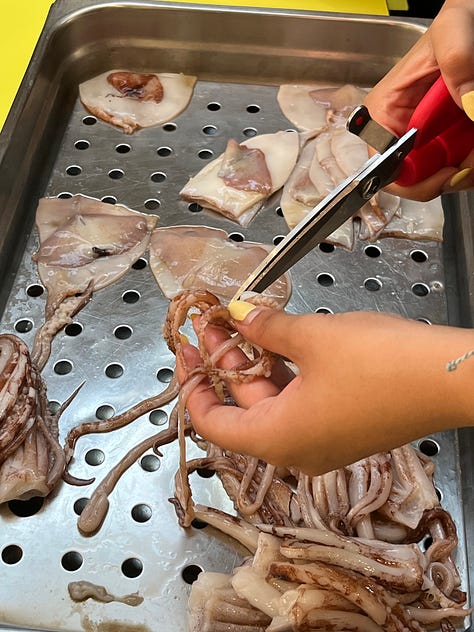


Everything Anna does with el Peix al Plat centers on sustainability, so without question the seafood was fresh and local. This required, for the canana squid — a particular species with a long mantle/body and short fins — several trips to several markets to find enough for two seafood cooking classes at the American high school.
Canana squid are perhaps more prevalent in Mediterranean waters, but less common at the market because, even though they have a richer flavor, they take longer to cook. So if you don’t know the difference, you buy canana instead of the more common calamari —- which is likely imported from another country, or even continent — and you don’t cook it long enough, it’s going to be tough, and you’ll not buy that variety again. (Especially if you don’t know the tentacles take nearly twice as long to cook as the mantle and fins.)
But canana is exceedingly delicious, so knowledge is power, and also flavor.

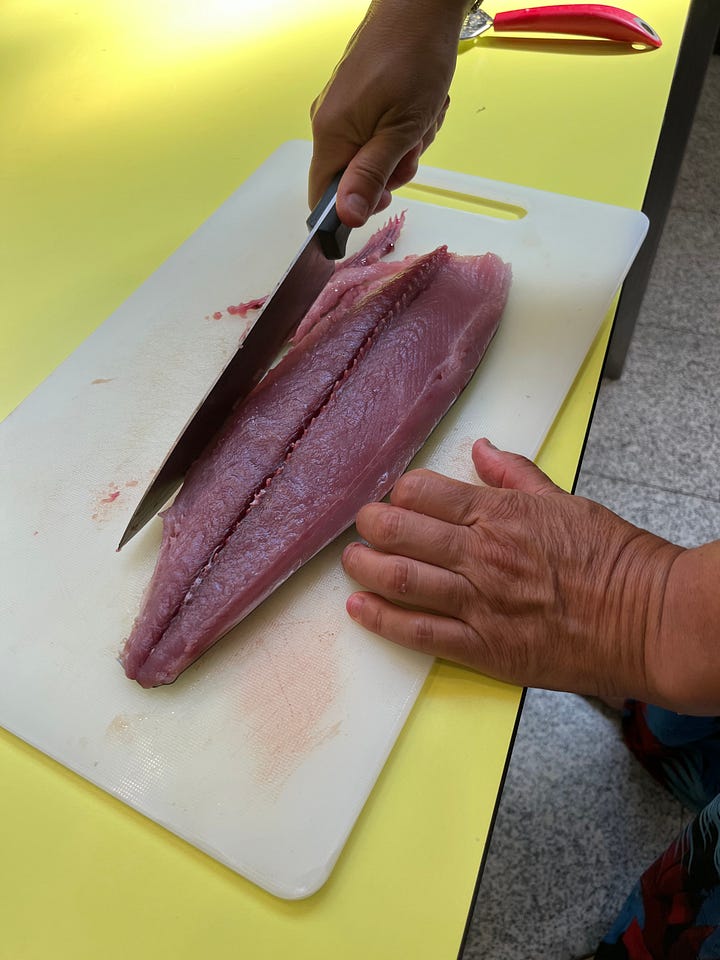
Similarly, bonito is indeed tuna — you can deep dive into the many tuna species here — but smaller and less prone to heavy metals, more local, and perfectly suited for eating raw. Anna deftly filleted the handsome specimen above, and the students added peaches, black sesame seeds, and herbs to create fancy spoonfuls of freshness.
Patatas Bravas, a typical Spanish dish, translates basically to Brave Potatoes, referring to the small amount of spicy pepper and calling out Spanish dining for its lack of chile heat. The dish also comes in multiple “authentic” and “definitive” recipes, and will take center stage in an upcoming post about authenticity (and also mentioned in a previous post about tapas).
But basically you’ve got fried potatoes covered with a sauce made with onion/garlic, oil and chicken stock, flour (to thicken), and sweet and/or spicy paprika. Our version also included dollops of mayonnaise (in some opinions, making it wholly inauthentic).
The students prepared each part of each dish, from chopping fish and fruit, to frying shrimp and potatoes, to breading canana, and then doing all the plating. They each had favorites and least-favorites, but in the end there was only enough left for us instructors to enjoy some as well.
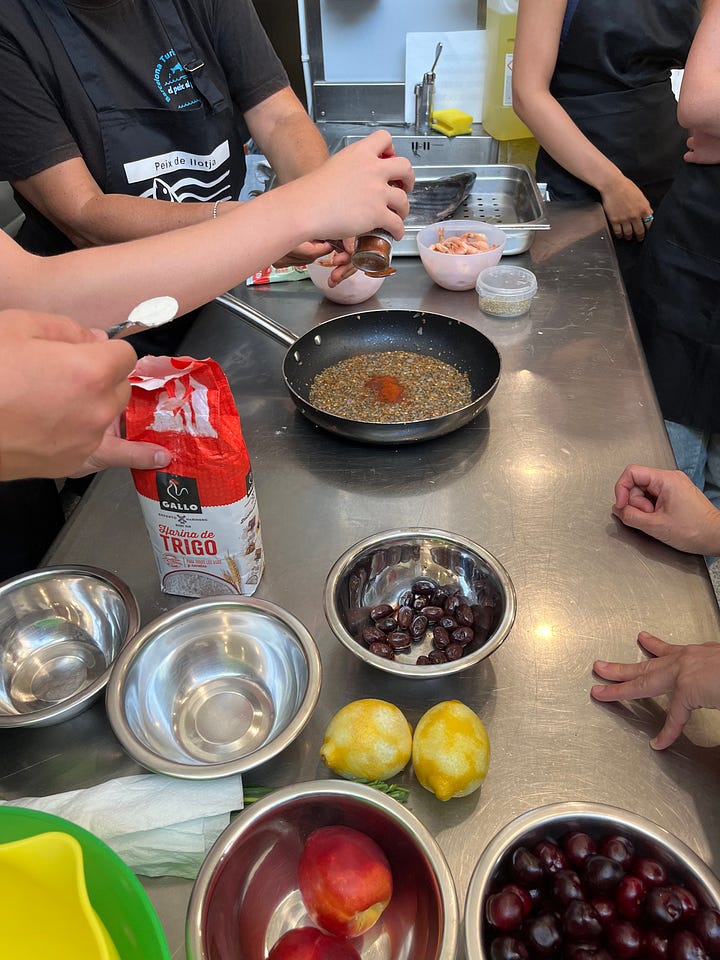

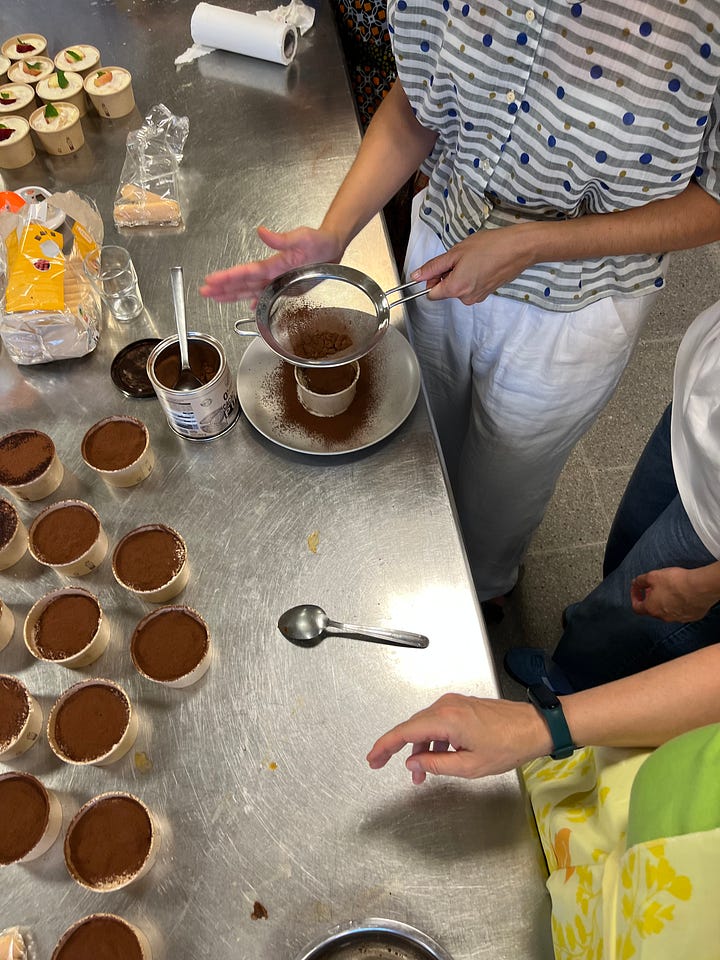

The dessert class was the last of a series Anna taught in the nearby community of El Prat de Llobregat. The rest of the classes focused on seafood, but she is so popular they asked her to step out of the seafood specialty and demonstrate the Italian desserts panna cotta and tiramisu.
Anna puts a tremendous amount of time and effort into preparing for her classes, but once they begin it’s almost effortless, as the group took the recipe and started working on each component. They dusted the individual tiramisu with cocoa powder and wrapped them up to take home. And the panna cotta we made two days before — after a challenging search for real vanilla beans, and my first experience with gelatin sheets, which Europeans tend to prefer over the powdered gelatin we use in the US.
After a near-disastrous-but-successful-nonetheless flip out of the pan and onto the serving tray, the class decorated the panna cotta with raspberry coulis, accented with whole berries and some mint sprigs. And then devoured it.
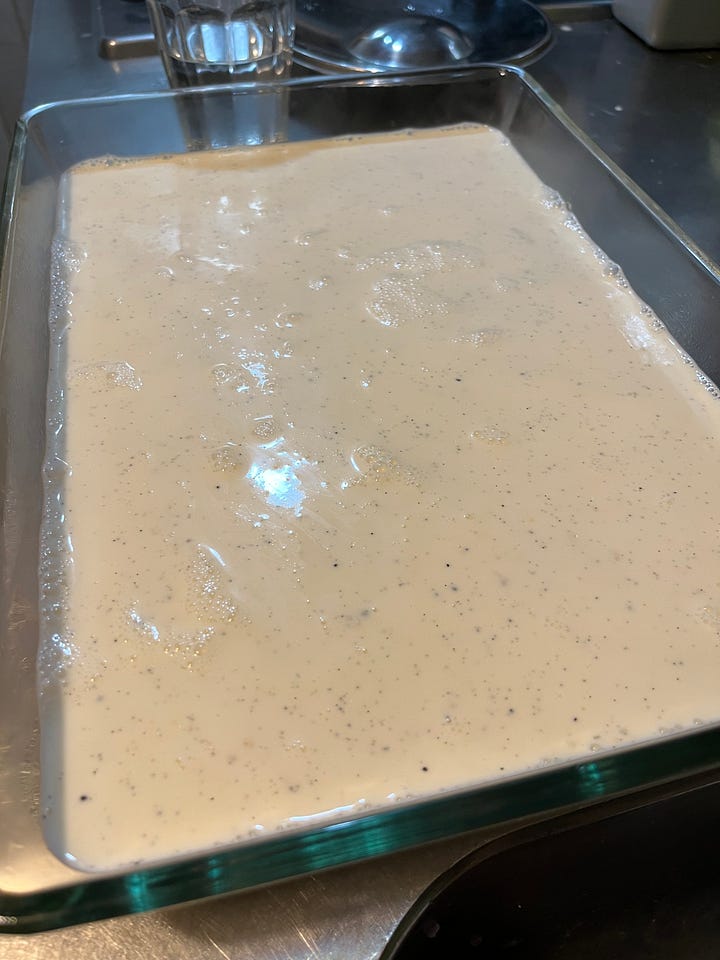
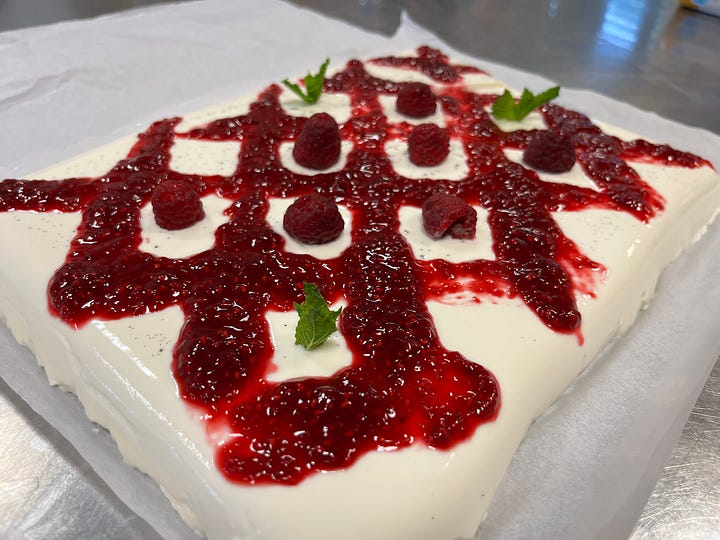
If you’re still wondering about the onion-tear connection, here’s the story: Onions and other alliums (like garlic) create special chemicals they store in different cells, and when we cut them, or when an animal bites them, the cell walls break and the chemicals combine to create new and volatile chemical compounds. Those compounds invade our senses, and our eyes try to flush them out by producing tears.
This is also why garlic tastes stronger the more you “damage” it before cooking — crushed garlic gives a stronger flavor compared to a baked whole clove, for instance.
This is a defense mechanism of the alliums, to prevent animals from eating them. And it is why, if you put onion scraps in a compost heap, they’ll go untouched until, after months, the non-fussy enzymes have a chance to do their job.
And now you know the rest of the story, and I have fulfilled my dual roles of student and teacher.
For you, what have you learned here, or what do you have to teach us?
###





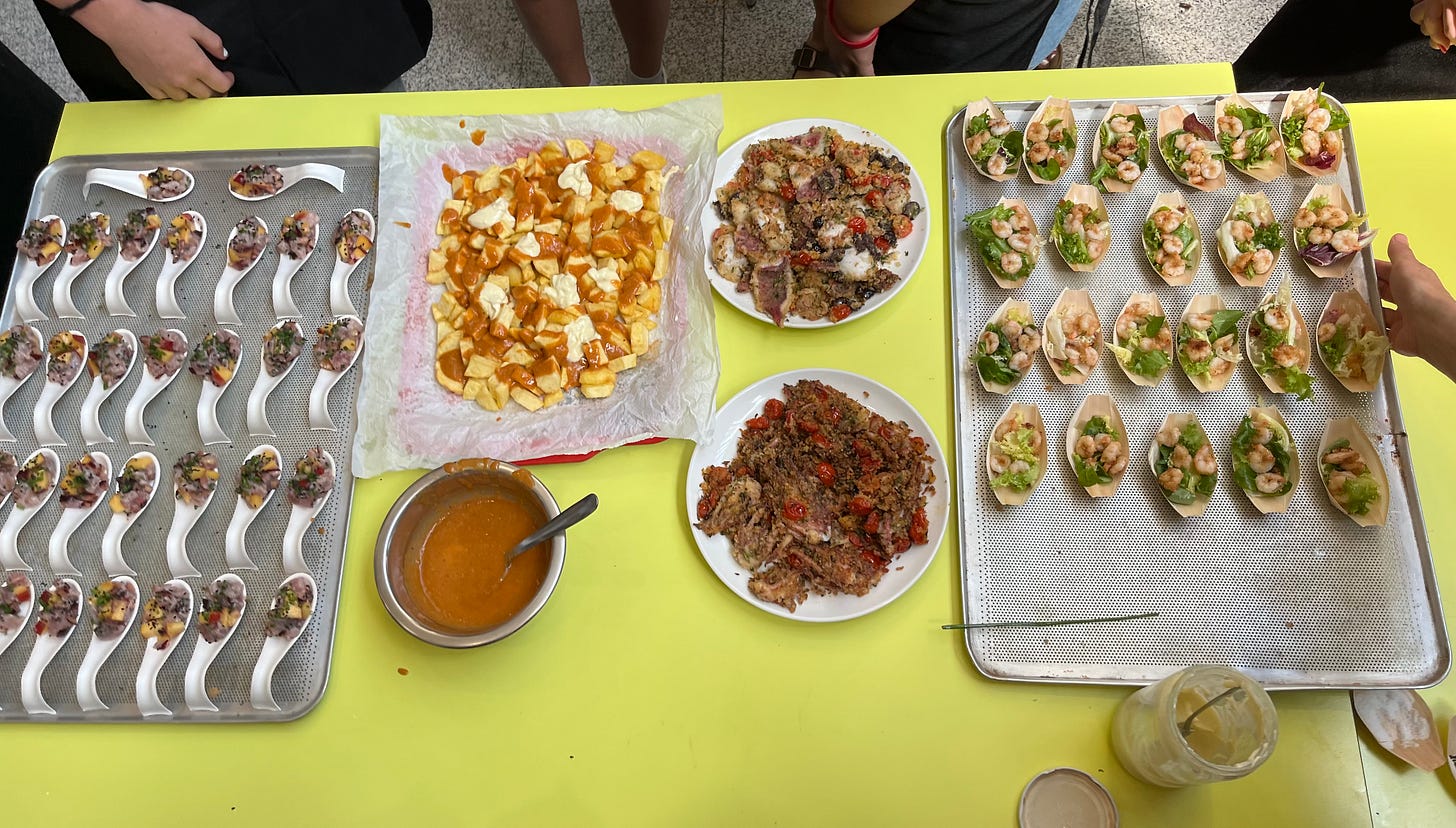
I didn’t realize that chewy squid was a result of under-cooking. I always assumed it was from overcooking. I think I’ve had very little properly prepared squid in my life, and that’s why I avoid it.
This is fascinating. I learned a great deal. The descriptions you have of squid take me back to a restaurant in Venice where I had a dish of tiny local squid—fabulous. I didn’t realize there were different kinds with vastly different cooking requirements. As a now-retired teacher, I think I always learned more from my students than they ever learned from me. But you’re right, it’s a continuum.